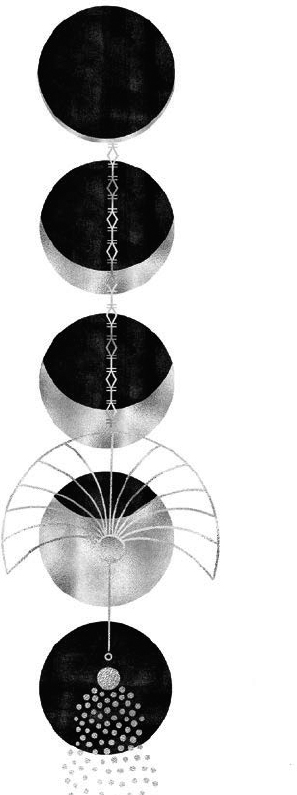

Because of our traditions, we have kept our balance for many, many years. Here in
Anatevka, we have traditions for everything: how to eat, how to sleep, how to wear
clothes. For instance, we always keep our heads covered, and always wear a little
prayer-shawl. This shows our constant devotion to God. You may ask, how did this
tradition start? I'll tell you. I don't know. But it's a tradition. And because of our
traditions, every one of us knows who he is, and what God expects him to do.
—Fiddler on the Roof
Throughout the course of human history, people have been using the natural cycles and rhythm of the earth to celebrate life and death, marriage and divorce, health and illness. Each season comes with its own unique celebrations and cycles within the rhythm of the year. So when did the wheel in its modern form begin to take shape?
No one specific culture can lay true claim to celebrating things such as the moon, sun, season, harvest, solstice, equinox, storm, or really any other facet of nature. It is in our very souls to celebrate, acknowledge, and give praise to the things that make us feel alive. However, each culture has its own traditions, values, and knowledge that make every named festival unique. Through time as cultures have come together, and been lost, stolen, shared, and conquered, many traditions have been made and lost and made anew.
Much of modern Western witchcraft is based off of the teachings and ideology of Aleister Crowley and the Hermetic Order of the Golden Dawn. Originally founded by a small group of English Freemasons during the late nineteenth century, the Hermetic Order of the Golden Dawn was an esoteric and occult society that had hundreds of men and women initiates.
The Order's foundations were influenced heavily by Judeo-Christian mysticism and Kabbalah, Hermeticism, ancient Egypt, Freemasonry, and alchemy, among other sources. This wide variety of foundational eclecticism helped create a tradition steeped in ceremonial and ritual-based magick. It was within this society that a way of organizing group magick and ritual came to be known. These systems were what built the foundations for what we know as modern Wicca.
This is not to say that Wicca is an offshoot of the Golden Dawn, but to point out in broader terms that the founders of Wicca (specifically Gerald Gardner) used the skeleton of the Golden Dawn to create the methods for groupwork that we see throughout witchcraft today. The biggest, most visible reminder we have of these origins is the phrase “so mote it be,” which is used widely in the right hand and Wiccan communities today. This phrase is actually Freemason in origin and was adapted by Gardner into modern Wicca.
Gerald Gardner also had a strong hand in the revival of the festivals on the modern wheel of the year. During the mid-twentieth century, Gardner adopted for his coven a wheel of the year celebrating the solstices and equinoxes as well as the four Celtic fire festivals:
Samhain (Winter Nights/Halloween/Pagan New Year)
Imbolc (Saint Brigid's Day/Candlemas)
Beltane (May Eve/May Day)
Lughnasagh (Frey Fest/Lammas)
At the time of creation, only the four Celtic holidays were named. The remaining four solstice and equinox days were described by their season and function rather than given a special name. These days were later named by Aidan Kelly in the 1970s and became popular under these names:
Yule (winter solstice)
Ostara (spring equinox)
Litha (summer solstice)
Mabon (autumn equinox)
Due to this group project of sorts with creating and naming the holidays on the wheel, we now have the mix of Celtic and Germanic-influenced holidays that we all know and love!